Can a Family Really Afford to Travel the World Full-Time? Here’s How We Did It
Wondering how to afford full-time family travel? Learn how one family left behind their 9-5 life, managed their finances on the road, and discovered the surprising affordability of slow travel.
FAMILY TRAVELDIGITAL NOMADTRAVEL
Meghan Gunseor
6/9/20257 min read
This post may contain affiliate links. As an Amazon Associate I earn from qualifying purchases. I may receive a small commission when you make a purchase using my link.
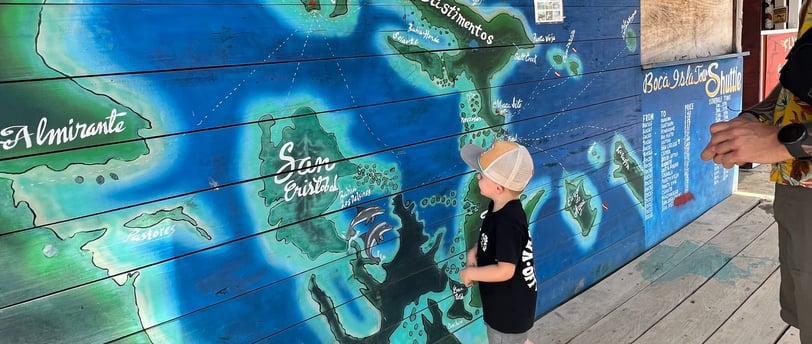

Is full-time travel with kids financially possible — or just a dream?
That’s the question we asked ourselves five years ago. At the time, we were living a picture-perfect version of the American dream. Our days were filled with long commutes, high-pressure jobs, designer bags, and a prestigious private school lined up for our young son. From the outside, it looked like we had it all, but on the inside, we were barely holding it together.
We were constantly exhausted and overstimulated. Even when we were physically present with our son, we weren’t really present. Then something unexpected happened: my husband experienced a health issue that forced him to step away from work and stay home. During that pause, he saw just how much life we were missing. It hit both of us, we needed a reset.
That’s when the idea emerged: What if we sold it all and traveled? What started as a plan to explore the U.S. by Airstream turned into a cross-country journey through 46 states and then, eventually, a leap into international travel. Five years later, we’re preparing to take on our biggest journey yet! A trip around the world. And yes, we’re doing it with a child in tow. And yes, we’re affording it.
So how exactly do we fund this full-time travel lifestyle as a family? Here’s everything you need to know. From financial fears to income strategies, slow travel hacks, and the real cost of living this way.
Leaving Stability Behind Was the Hardest Part
Before we even touched our savings or looked at a spreadsheet, the hardest part was making peace with walking away from everything we’d built. It wasn’t just the material things, though there were plenty of those - luxury cars, a beautiful home, more clothes than I can even fathom these days and just all our stuff. It was the life we thought we were supposed to live.
We had put years into building that life, so stepping away felt almost like failure at first, though exciting. And while it’s easy to romanticize travel, leaving a stable income behind was terrifying. The idea of starting over emotionally, professionally, and financially was overwhelming. We were also deep in a debt-based system, where success often means more spending and more stress.
But the more we thought about the alternative—continuing down a path that drained us—the more convinced we were that we had to try something different.
Our Real Travel Budget: How We Make It Work
One of the biggest misconceptions about full-time travel is that it’s outrageously expensive. The truth? It can be as expensive or as affordable as you want it to be. For us, it’s surprisingly sustainable.
We live on a clear monthly budget, which adjusts depending on where we are in the world. Some places are more expensive, and in those cases, we choose simpler accommodations or limit paid activities. In more affordable countries, we allow ourselves a bit more flexibility. But the monthly structure stays consistent:
Accommodations: $2,500
Food: $1,500
Transportation: $500–$1,000
Activities: $500
Miscellaneous: $500
This adds up to about $5,500–$6,000 per month. That might sound like a lot, but consider that this includes everything—housing, meals, experiences, and more. When we lived in the U.S., just our mortgage and car payments almost added up to this. I
One key reason this works? We slow travel. By staying in places longer, we get better deals on housing, spend less on transport, and have time to truly settle in and live like locals. What is amazing about this lifestyle is the ability to adjust this budget to your preferences. We are coffee snobs and foodies, which is why our food budget is significant, but eating at home could reduce this by more than half.
Our Income: What Funds Our Travel Lifestyle
When we first hit the road, we didn’t have a fully formed financial plan or income stream. What we had was determination and a willingness to be resourceful. Over time, we built an income strategy that allows us to travel while working remotely in a way that still prioritizes flexibility and family time.
I launched a service-based business supporting startups and e-commerce brands, offering marketing, operations, and consulting services. Some of my work is asynchronous, while other parts require a few standard U.S. work hours each week. Over time, that business grew steadily.
We also started this blog, which brings in income through traffic, partnerships, and eventually digital products. I created and launched The Adventurous Learner, a learning app for families who want to integrate global education into their lives. I’m also writing a series of children’s books and eventually a book about our travels. Creative projects that have come directly out of this lifestyle.
In the past, we earned money through brand collaborations and sponsored posts on Instagram. While those paid well, they also made travel feel like a job. We found ourselves arriving in a new destination and immediately needing to create content before we could even enjoy it. Eventually, we decided that wasn’t how we wanted to travel, and we stepped away from that model and eventually from Instagram all together. Now we are starting over, but with no intention to monetize it, just to document our journey to look back on some day.
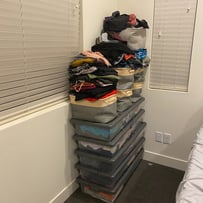
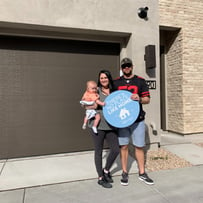
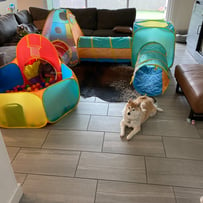

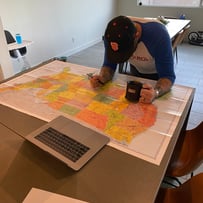

Letting go was a process
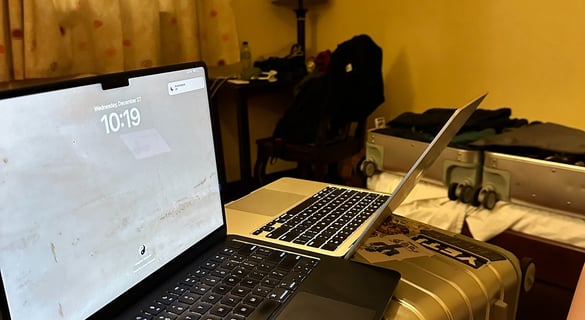

Handling Large Expenses on the Road
People often assume that traveling families must constantly be shelling out thousands for flights or luxury Airbnbs. The truth is, we’ve found smarter ways to handle those bigger costs.
When we know we have a big move coming up, like changing countries or crossing continents, we start planning months in advance. If we have a quiet month with no big moves, we “stack” our transportation funds. That means we might spend just a few hundred dollars on local travel and save the rest for the next big relocation.
Also, we rarely fly. Instead, we travel overland whenever possible by train, bus, ferry, or car. Although we don't do this to save money, it is more affordable, but it allows us to see and experience so much more than we would from 30,000 feet in the air.
Unexpected Ways We’ve Saved Money While Traveling
Believe it or not, this lifestyle is more affordable than the one we left behind. Our accommodations now cost less than our mortgage did. We don’t have car payments, insurance premiums, or repair bills. We don’t impulse-shop or swing by Target for “just one thing” that turns into $200.
In many countries, eating out is cheaper than grocery shopping, and when you live minimally, you stop buying things you don’t need. The biggest financial surprise? Our budget works everywhere. No matter the country or city you go to, you will find what you are looking for.
How We Decide When to Splurge
We’re very intentional about how we spend our money. If something is going to create a lifelong memory, like zip lining through the jungles of Colombia or a guided jungle trek in Guatemala, we go for it. But we don’t spend money just because we feel like we “should.” If something does not interest us, we simply feel no pressure to experience it.
We also look at the month as a whole. If we find a high-end Airbnb that falls within our total monthly budget, we say yes. If we’ve had a big month already, we scale back on activities or choose simpler meals out. It’s all about balance.
The Financial Tools That Keep Us on Track
While there are plenty of budgeting apps out there, I prefer to keep things simple. I use an Google Sheet to track our expenses, upcoming accommodations, monthly bills, and any irregular spending. It’s basic, but it works.
We also rely heavily on travel tools like Airbnb, Booking.com, Google Translate, and WhatsApp. For transportation, we use Uber, Waze, and Google Maps, but we always check for local apps when we arrive in a new country. Local taxi apps or food delivery services usually offer better rates than international platforms.
To Families Who Think This Lifestyle Is Out of Reach
If you’re reading this and thinking, “This sounds amazing, but there’s no way we could afford it,” I want to challenge that. Compared to your current lifestyle, mortgage, car payments, daycare, fast food, shopping. It might actually cost less to live on the road.
What we’ve gained is priceless: time together, slower mornings, shared wonder, and a deeper understanding of the world. And we’ve done it all while reducing our expenses and living on our terms.
The Biggest Financial Lesson We’ve Learned
The single most important thing we’ve learned from five years of full-time family travel is this: living debt-free is true freedom.
No monthly car payments. No mortgage. No credit card bills looming. Just a life built around intention, connection, and exploration. There’s something incredibly empowering about knowing your needs are met and your life is full, not with things, but with experiences.
Final Thoughts: What If You Tried It Too?
If you’ve ever dreamed of breaking out of the grind and showing your kids the world, know that it’s more possible than you think. You don’t have to be wealthy. You don’t need a perfect plan. You just need a willingness to reimagine what life could look like.
For us, that looked like trading square footage for freedom, and designer bags for backpacks. We found our rhythm on the road, and it’s changed us in ways we’re still discovering.
If you’re curious about how to take the first steps into full-time family travel, or want help building a travel budget that fits your life, subscribe to our newsletter.
Your version of freedom might be closer than you think.
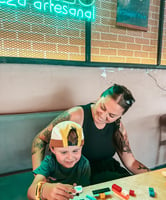

Hi! I'm


